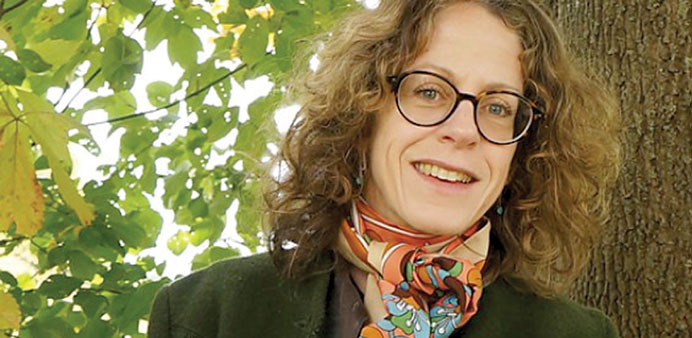By Umer Nangiana
In a ‘Crossing Boundaries’ series lecture to be hosted by Virginia Commonwealth University-Qatar (VCUQ), essayist and writer Jennifer Kabat explores how language, history and art, even the birds in her backyard, inform her work on contemporary art and culture.
The lecture, “If you lived here, you’d be home by now,” exploring “longing and belonging” will be held on October 21 at VCUQ Atrium.
Moving from the rural landscape of upstate New York to drones, technology and social media through to Greek mythology and the steel plates covering holes in New York City streets, Kabat searches for meaning in the present by opening up the gaps in history.
Her essays and criticism pull equally from the contemporary art-world to the small-town community to ask questions about how we look at both.
“I love the essay form with an unbridled passion. I think essays offer a power and possibility missing in the novel now, not because essays purport to offer truth, more that I feel a bit stuck with novels even while I continue to write fiction,” says Kabat.
Realist fiction, she says, though imbued with a liberal humanism to understand others, seems stuck to her, mired in rules about plot and how story unfolds, building to conclusions, etc.
“I even get frustrated with how detail is used to reveal characters’ emotions. So, right now, and this is really a statement of this moment vs. some hard-and-fast rule, I’m interested in the hybrid possibilities of the essay,” adds the essayist in her signature style.
That is part of why she co-founded ‘The Weeklings’, and is currently working on a series about ghosts and cities and urbanism inspired in part by the artist Kate Newby’s work as well as trips to Brixton and Bristol.
Kabat was recently awarded a Creative Capital, Warhol Foundation Arts Writers Grant for her criticism. Her work has appeared in the Believer, the Financial Times, the Guardian, Wired, New York Magazine, The Rumpus and Salon. She writes frequently for Frieze and Metropolis, where she is a contributing editor.
For the Arnolfini contemporary art museum in Bristol she created an essay-as-ghost story, “The Place of the Bridge,” which was nominated for a Pushcart Prize. A recent finalist for Notting Hill Edition’s biennial essay prize, she teaches at NYU, SVA and the Pennsylvania Academy of Fine Arts.
“I’ve also been an editor at the American design magazine ID as well as the British style magazine The Face and men’s mag Arena, all of which were lauded, none of which still exists. This is part of the reason I love the Internet and possibility it allows for exploring longer writing,” says Kabat.
The writer from upstate New York, United States of America (USA), is equally interested in writing on subjects from rural life to contemporary art, and occasionally the two together.
Kabat did graduate work in art history at Columbia University and was a Helena Rubenstein Fellow in the Whitney Museum of Art’s Independent Study Program. In 2003, she received an MA in creative writing from the University of East Anglia supported by a grant from the British government. Her story “As If I Could Assume Your Life” was published in the British collection X-24 Unclassified, edited by Tash Aw.
In 2012 along with Greg Olear, Sean Beaudoin and Janet Steen, Kabat co-founded The Weeklings, launched to support long-form writing online. Dedicated to an essay a day, the site’s contributors include Vanity Fair contributing editor Elissa Schappel, novelist Nelly Reifler and former Granta editor Alex Clark.
In summers, she teaches in SVA’s D-Crit programme. She has written and worked on brand strategies and marketing projects for companies like Nike, Converse and others. Recently, Kabat joined the board for the Prattsville Art Center whose work, she says, she admires immensely. She has also chaired a talk at Frieze London on ACT UP, queer protest and art.
Her novel Our Greater Selves grew out of a story that was a finalist for Glimmer Train’s short story award for new writers. The novel takes art and longing to escape a small rural town and how those two can add up to a crime. Told as a memoir, it details the effects nearly two decades later.

Kabat writes frequently for Frieze and Metropolis, where she is a contributing editor.


